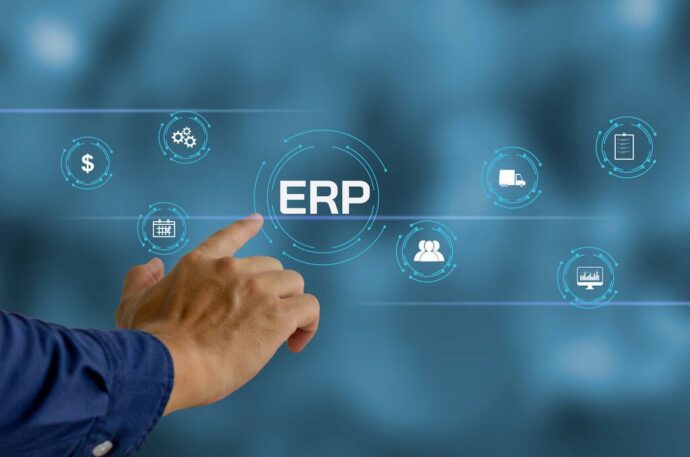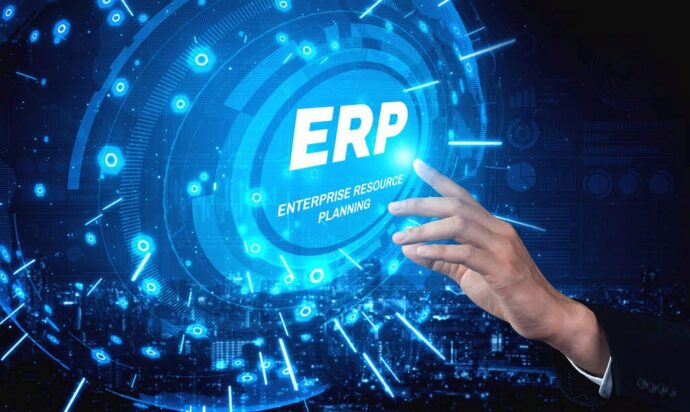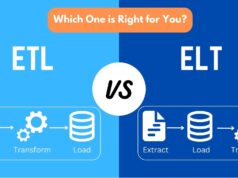An Enterprise Resource Planning (ERP) system is a software application that helps businesses manage their core operations, such as accounting, finance, inventory, human resources and customer relations. The term “ERP” was first coined in the 1990s and has since become one of the most widely used business solutions available today.
The main purpose of ERP software is to integrate all aspects of an organization’s business processes into a single system. This allows for streamlined communication between departments and more efficient operations overall. ERP systems provide businesses with access to real-time information which can be used to make better decisions in regards to planning, budgeting and forecasting. Additionally, ERP systems help automate routine tasks such as data entry and reporting, freeing up personnel resources for other tasks or projects.
The key components of an ERP system include modules for core processes like finance & accounting; human resources; customer relationship management; supply chain management; production planning & scheduling; warehousing & distribution; logistics management; quality control & assurance; project management and business intelligence/analytics among others. The specific features offered by each module will vary depending on the vendor or platform chosen by the business but typically include tools for tracking orders & inventory levels, and billing customers.
Benefits of ERP Software
Businesses of all sizes are increasingly turning to enterprise resource planning (ERP) software to streamline their operations and drive more efficient processes. ERP software is an important tool that provides organizations with a central platform from which they can manage key functions across the entire business, such as finance, accounting, inventory management, customer relationship management (CRM), human resources (HR), and other related activities. By leveraging ERP software, businesses can gain access to a wide range of benefits that help them improve operational efficiency and profitability.
One major benefit of using ERP software is improved data accuracy. By integrating all business processes into one centralized platform, organizations are able to reduce the risk of errors due to data duplication or inconsistencies between multiple systems. This helps ensure more accurate information throughout the organization while also providing reliable insights into performance metrics such as costs, sales figures, customer service levels and staff productivity.
Another advantage of using ERP software is increased visibility into operations across the entire organization. With an integrated system in place it’s easier for managers to monitor progress on projects or tasks in real-time without having to manually collect data from multiple departments or systems. This allows them to quickly identify areas for improvement and take corrective measures if necessary so that operations continue running.
Common Features of ERP Systems
ERP systems, or Enterprise Resource Planning systems, are software applications that help businesses manage many aspects of their operations. They provide the ability to integrate different areas of the business into one system. This allows organizations to streamline processes, save money and improve efficiency. In this article, we will discuss some of the common features of ERP systems that make them so popular among organizations.
First and foremost is the ability to track data across all departments within an organization. ERP systems enable businesses to store information from sales, finance and inventory in one central database that can be accessed by all departments as needed. This helps reduce manual entry errors and improves reporting accuracy since data is only entered once into the system rather than multiple times for different departments or locations.
ERP systems often include powerful analytics capabilities which allow users to easily analyze data trends over time as well as compare performance across different areas of their business such as sales versus marketing or finance versus inventory management. This helps organizations better understand how their operations are performing and identify areas where processes can be improved upon for greater efficiency and cost savings in the long run.
Another key feature is integration with other third-party applications such as accounting software or customer relationship management (CRM).
Cost Considerations for Implementing ERP Software

ERP (Enterprise Resource Planning) software is an essential tool for companies looking to streamline their processes and improve their efficiency. However, the cost of implementing ERP software can be significant, and it’s important to consider these costs when deciding whether or not to make the investment.
The first cost consideration for implementing ERP software is licensing fees. Depending on the size and complexity of your company’s needs, these fees can range from several thousand dollars to hundreds of thousands or even millions of dollars annually. Additionally, many vendors charge a one-time implementation fee that must be taken into account as well.
Another cost associated with ERP implementation is the time and resources required from staff members who are responsible for setting up and configuring the system properly. This includes training employees on how to use it effectively, which can take weeks or even months depending on how large your organization is and how much time each person has available for learning about it. Additionally, some organizations may need IT staff members to help with installation as well as ongoing support after implementation has been completed in order for everything to run smoothly over time.
There are costs associated with maintaining an ERP system over its lifetime such as updating hardware and software components when necessary.
Challenges of Implementing and Maintaining ERP Software

ERP, or Enterprise Resource Planning, is a type of software that helps businesses manage their operations. This system can be used to track financial data, manage inventory and customer relationships, and handle other business processes. It has become an essential tool for organizations looking to stay competitive in the modern market. However, while ERP software can offer many advantages, it also comes with its own set of challenges when it comes to implementation and maintenance.
The first challenge is the cost associated with implementing ERP software. The hardware and software required can be expensive upfront and there may also be additional costs for customization or training staff on the system’s use. Additionally, if changes need to be made after implementation—which is often necessary due to changing business needs—these costs may increase even more significantly over time.
Another issue that arises when implementing ERP systems is compatibility with existing systems or databases within a company’s infrastructure. Before setting up an ERP system, companies must ensure that all existing systems are compatible—or else they risk encountering major delays during integration or experiencing data loss in the transition process. This compatibility factor also presents a challenge when making upgrades since any new features must integrate seamlessly into existing infrastructure before they can be implemented successfully across the organization.
Conclusion

In conclusion, ERP in software is a powerful tool that can help organizations of all sizes improve their operations and processes. It enables them to streamline their processes, reduce manual errors, and increase overall efficiency. ERP systems are also very customizable and can be tailored to fit the needs of any business or organization. With the right implementation and maintenance, it can be a great asset for organizations looking to make the most out of their resources.

















